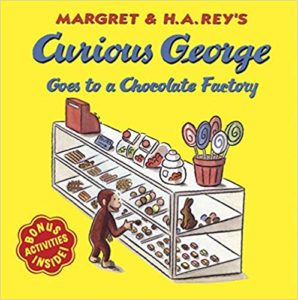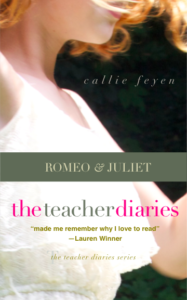We are reading Curious George Goes to a Chocolate Factory, a second grader and I. I will call her Clara. Clara loves Curious George. “I know he’s gonna get himself in some sort of trouble,” she told me when she lifted the cover, shaking her head and smiling. “He always does.”
Clara is right, though we haven’t gotten there yet. We’ve entered the chocolate factory, where George is, well, curious. It’s only a matter of time before something happens. But Clara has stopped. She is exhausted from the effort she’s put into reading this story. When we began, her voice was jolly, and she read fluently and expressively. Now, her shoulders are slumped, her eyes lowered and off the page. She’s twiddling her fingers.
It is a delight to be curious. It is also exhausting.
There are a lot of “shoulds” when it comes to teaching a child to read. Clara should be at a Level L. I should encourage her to use the laminated bookmark with six strategies for sounding out words. I should take note of the letter blends that give Clara a hard time, so I can drill her until she’s fluent.
I don’t have a problem with these “shoulds”. I think they are important, and not because of some test, but because Clara loves George and she should have the opportunity—the basic right—to come along with him on his many adventures.
Maybe it’s because I’m tired, or bored, or maybe it’s because Clara looks sad, but I don’t care about her reading level, or the laminated bookmark, I don’t want to keep track of the words piling up that she doesn’t know. I want to take Clara through the chocolate factory.
I move to slide the book closer so I can read the story to Clara. I figure her hearing the story and following along will give her some basic knowledge of the plot, and then we can go back and she can try again. Clara perks up, and slides her chair closer to me. We’ve done this before.

“Clara, I have an idea,” I say, taking out a piece of paper for each of us. “How about we pretend we’re chocolate designers?” I pull out crayons from a pencil box, along with two pencils.
Clara takes a pencil but looks at me blankly.
“Watch me,” I say and draw a square on the paper. I pick up a red crayon and make some polka dots with it, then with a brown crayon, I color the rest.
“This is cinnamon chocolate,” I say as I write the sentence underneath.
Clara smiles, and leans towards the paper. She draws a square, and then on it, a paw print. Clara loves dogs. I know exactly what kind of chocolate she’s designing.
“This is paw print chocolate,” she writes. She looks at me for a moment. “Maybe there’s a marshmallow inside.”
“Yum,” I say.
We both turn to our papers, draw chocolates, and write about them.
I make rainbow chocolate. Clara makes star chocolate. There’s gummy bear chocolate, and football chocolate. There’s Tuesday (the day I see Clara) chocolate, a salty pretzel and a dollop of caramel hidden inside.
Clara draws a heart, and then another, and another around her original, each heart larger than the next.
“This is family chocolate,” she tells me. “It’s to share with your family.”
“That seems like the best kind of chocolate there is,” I tell her.
“I can’t spell ‘family,'” she tells me.
“Sure you can,” I say. “What letters makes the ‘fffff’ sound?”
She writes an “f,” and that’s how it goes. I make the sound and she writes the letter, until we get to “y,” which is tricky.
“E?” she asks.
“What other letter makes the “e” sound?”
She writes “Y.”
Clara studies the page opposite the chocolates. George is in the factory, climbing onto the conveyor belt.
“I think George is about to get in trouble,” Clara says.
“Would you like to keep reading?” I ask.
Clara puts the pencil down, nods, and takes a deep breath. This time, I slide closer to her, ready to help if she needs it.
She reads. She’s careful, and at times a little clunky, but she’s doing it.
She has plenty of energy—plenty of curiosity—to keep up with George.
Photo by Tambako the Jaguar, Creative Commons license via Flickr. Post by Callie Feyen.
For the Heart of a Teacher

—SEB Finch, Amazon reviewer
- Poetry Prompt: Courage to Follow - July 24, 2023
- Poetry Prompt: Being a Pilgrim and a Martha Stewart Homemaker - July 10, 2023
- Poetry Prompt: Monarch Butterfly’s Wildflower - June 19, 2023

L.L. Barkat says
This made me so happy—a child given the space to love what she loves, even as she’s working hard to develop necessary skills. I’m thinking that Clara won’t forget how to spell “family.” And she won’t forget you and your mutual chocolate designing stint. Maybe this experience will be one she falls back on whenever she struggles with reading in the future—both for the embedded strategy of it and the generosity of it.